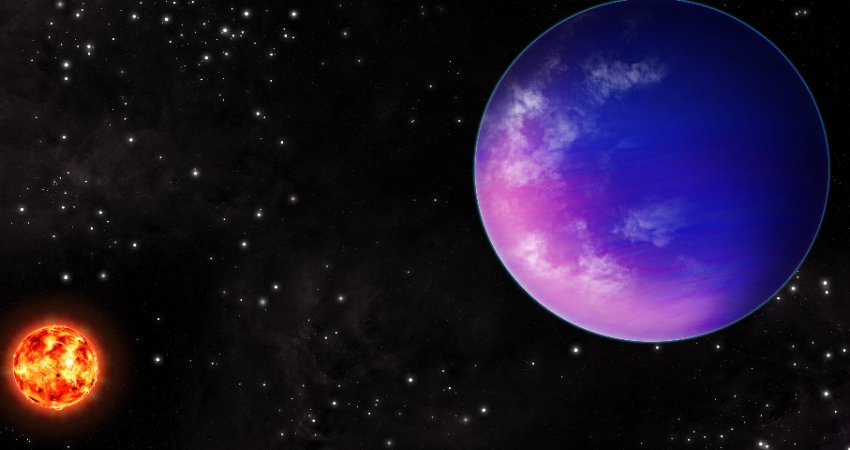Eddie Gonzales Jr. – MessageToEagle.com – Astronomers have observed a young exoplanet K2-25b , orbiting a young star in the Hyades cluster, a nearby cluster of young stars in the direction of the constellation Taurus.
The system is approximately 600 million years old and is located about 150 light-years from Earth.

This celestial object – weighing in at 25 Earth-masses, and slightly smaller than Neptune – is a red dwarf located approximately 153 light-years (47 parsecs) away from the Sun. K2-25b has been found to be unusually dense for its size and age—raising the question of how it came to exist. This exoplanet orbits an M-dwarf star—the most common type of star in the galaxy—in 3.5 days.
New observations of the exoplanet, known as K2-25b, raise new questions about current theories of planet formation.
Planets with sizes between those of Earth and Neptune are common companions to stars in the Milky Way, despite the fact that no such planets are found in our Solar System. Understanding how these “sub-Neptune” planets form and evolve is a frontier question in studies of exoplanets.
Astronomers predict that giant planets form by first assembling a modest rock-ice core of 5-10 times the mass of Earth and then enrobing themselves in a massive gaseous envelope hundreds of times the mass of Earth. The result is a gas giant like Jupiter.
K2-25b breaks all the rules of this conventional picture: With a mass 25 times, that of Earth and modest in size, K2-25b is nearly all core and very little gaseous envelope. These strange properties pose two puzzles for astronomers.
First, how did K2-25b assemble such a large core, many times the 5-10 Earth-mass limit predicted by theory? And second, with its high core mass—and consequent strong gravitational pull—how did it avoid accumulating a significant gaseous envelope?
The team studying K2-25b found the result surprising.
“K2-25b is unusual,” said Gudmundur Stefansson, a postdoctoral fellow at Princeton University, who led the research team. The planet is dense for its size and age, in contrast to other young, sub-Neptune-sized planets that orbit close to their host star.” said Stefansson.
“Usually these worlds are observed to have low densities—and some even have extended evaporating atmospheres. K2-25b, with the measurements in hand, seems to have a dense core, either rocky or water-rich, with a thin envelope.”
The exoplanet’s size was initially measured with NASA’s Kepler satellite, the size measurement was refined using high-precision measurements from the WIYN 0.9-meter Telescope at KPNO and the 3.5-meter telescope at Apache Point Observatory (APO) in New Mexico.
The observations made with these two telescopes took advantage of a simple but effective technique that was developed as part of Stefansson’s doctoral thesis. The technique uses a clever optical component called an Engineered Diffuser, which can be obtained off the shelf for around $500. It spreads out the light from the star to cover more pixels on the camera, allowing the brightness of the star during the planet’s transit to be more accurately measured, and resulting in a higher-precision measurement of the size of the orbiting planet, among other parameters.
“The innovative diffuser allowed us to better define the shape of the transit and thereby further constrain the size, density, and composition of the planet,” said Jayadev Rajagopal, an astronomer at NOIRLab who was also involved in the study.
For its low cost, the diffuser delivers an outsized scientific return. “Smaller aperture telescopes, when equipped with state-of-the-art, but inexpensive, the equipment can be platforms for high impact science programs,” explains Rajagopal. “Very accurate photometry will be in demand for exploring host stars and planets in tandem with space missions and larger apertures from the ground, and this is an illustration of the role that a modest-sized 0.9-meter telescope can play in that effort.”
Written by Eddie Gonzales Jr. – MessageToEagle.com Staff






